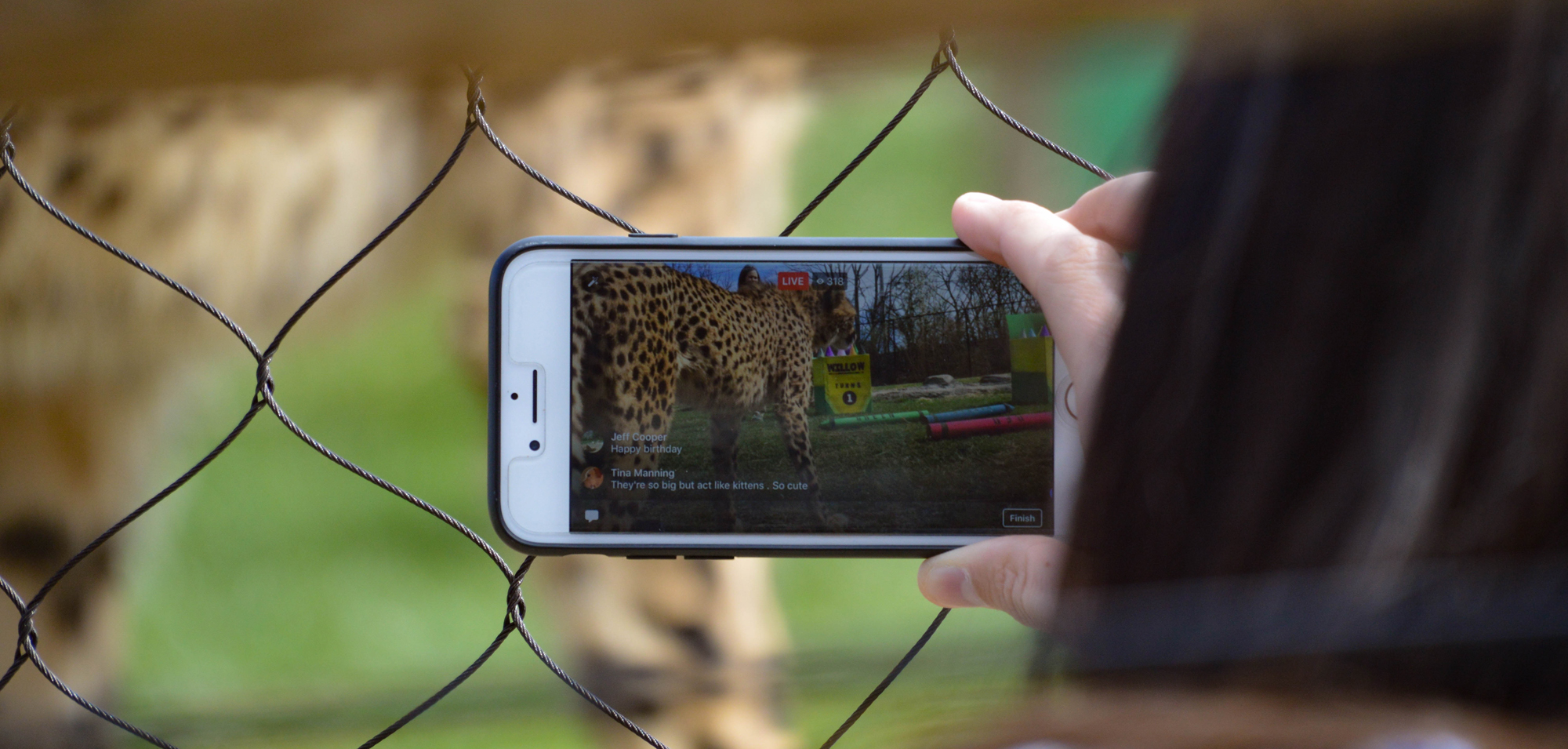SXSW: The future of news video is understanding audiences
Video is increasingly a priority across newsrooms worldwide. On March 12th, at South By Southwest in Austin, Texas, Deborah Acosta, an interactive filmmaker at The New York Times, Adam Banicki, a senior producer at VICE Media, and Joe Posner, director of multimedia at Vox.com, discussed the future of video consumption on the fast-changing web.
Storybench followed the SXSW session where the journalists explored best practices for news videomaking, Facebook Live, experimentation in their newsrooms, and their ideas on what makes a good social video. Below, a few takeaways from the panel.
Great story makes great video and that rests on great journalism
Though we live in the age of smartphones and on-the-go video editing software, quality journalism should not just be measured by the technical skills used to make it, according to the panelists.
“Now that I’ve had to use a cellphone to shoot all my footage for the past year, I realized that quality is how good the story is, how true it is, how much heart it has,” said Acosta, who has been working on live video for The New York Times for over a year.
For Joe Posner, Vox.com’s director of multimedia, a journalist’s passion – or obsession with the subject – should shine through. That is guaranteed to garner shares and connect readers to your story.
“It is really important to think what the word quality means in the context of the internet,” said Posner. “For me, given that we are asking people to share, quality means that the person who made [the video] is obsessed, passionate and creative enough that they would share it themselves.”
Next up: "Social Video and the Future of Consumption" with @DeborahAcosta, @joeposner, & @AdamBanicki #futurevideo #sxsw #sxsw2017 pic.twitter.com/YkZiuWu74R
— Kristy Beagle (@cinfullysocial) March 12, 2017
Being versatile will please your editors
All three panelists stressed that some technical skills are important for news video producers, but other abilities are also valued inside their newsrooms. Versatility, or the capacity of doing different things, is one of them.
“We really focus on empowering individual creators in the same way YouTube and other democratized forms of media have long done that directly. The difference with us is that we have this editorial mission,” said Posner of the work of Vox.com, pointing to series like 2016ish, about the 2016 Presidential campaign, by Elizabeth Plank.
Appreciating a learning curve is also a key concern for the digital and social video teams. Reporters and editors learn a lot as they experiment, said VICE’s senior producer Adam Banicki. That takes patience – and pushing, he said.
“We are a very young and creative group of producers and we are trying to cultivate producers that know as many things in the process as possible, and when they don’t, we give them the opportunities to watch and learn [Adobe] After Effects or anything in the creative process. This is something we want them to be doing and will never say no to,” he explained.
At the Zen Hospice Project, residents celebrate life instead of fearing death. pic.twitter.com/zoP817NSPS
— VICE Video (@VICE_Video) March 13, 2017
Journalist-reader interaction is the future
How people will consume news years from now remains the million-dollar question. When it comes to video, and especially live video, making predictions is hard because the platforms are young and still developing. Still, Acosta believes the future will definitely include a conversation between journalists and news consumers.
“With live news, the future of consumption is direct interaction with the journalist, with the source as it is happening,” she said, pointing out that Facebook Live turned on its head all that the newsroom knew about user behavior and video content.
“Now we are realizing we can go much longer with our audiences,” she said. “People wouldn’t watch our whole videos, but after we started doing these interactive videos, people were watching for 30 minutes.”
“Longer” is the new “shorter”
News videos are increasingly getting longer. But length has always been a worry for videomakers. The old understanding – that web videos needed to be short – was overcome recently after what the panel called an “educational process.”
“We started with 2-minute videos, and now the average is 6 minutes,” said Posner, who referred to Vox.com’s all-time best performing video, a 5-minute explainer on the Syrian civil war [see below] that hit almost 12 million views on Facebook and Youtube combined.
“Our hope is that Facebook will embrace longer forms in the next year, maybe it is going to be 5 or 8 minutes. From a creative standpoint, those are the ones that are much more fun to work on,” said Banicki, referring to the news that Facebook may begin prioritizing longer videos.
Monetizing Facebook Live is still a big question
One of the great dilemmas newsrooms face working with social media is how to generate revenue from the content they are posting. Facebook Live video was launched a little over a year ago and there are still doubts as to how to monetize that live news content.
“How are people going to pay for this when you are trying to reach people in what is essentially an un-monetized platform right now?” asked Posner. It’s no use fighting the tide though, he said, journalists have to go where the audience is.
“We found Facebook an incredibly powerful place to be because it is a gigantic space to be,” he said. “It is important that we find people where they are. [Media] is going to be on these stages and then [will] figure out how to make it pay for itself once it gets the audience.”
The New York Times has also embraced live videos and, as Deborah Acosta explained, has ambitious plans for it. “For a big legacy brand it’s been great to have a space where we can experiment and be wild,” she said. “At first we were very skeptical. Now, I can say with certainty we are going to continue with the live journalism on Facebook.” Acosta also said that the Times has been experimenting with live video on NYTimes.com, its own platform.
https://www.facebook.com/nytimes/videos/vl.397736697273665/10151105261889999/?type=1
Snapchat continues to intrigue the industry
The launch of Snapchat Discover two years ago put the social messaging app on the radar of news media worldwide. Since then, Snapchat has become one of the most popular apps among teens and young adults – and that’s an untapped market for many news organizations. Still, it’s been hard for many to properly leverage Snapchat.
“It is something that excites me for this year and is also a way to reach younger audiences that we have to embrace and is important for us,” said Banicki. “There is something to be said there and we have to think how to create our stories into little, few-second snaps.”
Vox.com was one of the first outlets to adopt Discover – they have since downscaled content at the platform from daily content to special editions – while The New York Times has only recently decided to create content in the form of “Snaps.”
“We are creating a strategy,” said Acosta. “We put together a team of designers who are thinking about how to do Snapchat in a more ‘Times-y’ style.” Audiences will have to wait a while longer to see what that means.
- SXSW: ‘Excel is okay’ and other tweet-size insights for data journalists and news nerds - March 17, 2018
- NICAR: Data stories from last year that you could be doing in your newsroom - March 13, 2018
- How to scrape Reddit with Python - March 12, 2018





